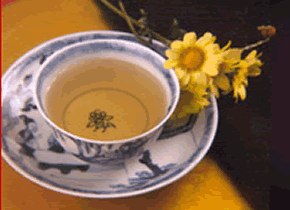Steeping Wisdom:
- Mindful Brewing: Herbal teas require gentle handling. Over-steeping can alter their flavors and medicinal qualities. For instance, peppermint, when steeped too long, may become overly medicinal rather than pleasantly refreshing.
- Enhancements: A touch of honey or natural sugar can enhance herbal teas, balancing their flavors and adding subtle sweetness.
Healthful Effects:
- Soothing Elixirs:
- Chamomile: Known for its calming effects, chamomile tea aids relaxation and promotes restful sleep. It also has antibacterial and anti-inflammatory properties.
- Peppermint: Beyond aiding digestion, peppermint tea boasts antioxidant, anticancer, antibacterial, and antiviral properties.
- Ginger: A zesty favorite, ginger tea fights nausea, supports digestion, and may even improve blood sugar control and lipid levels.
- Hibiscus: Vibrant and flavorful, hibiscus tea may reduce cholesterol and blood pressure.
- Detoxification:
- Herbal teas gently support the body’s natural detox processes, aiding liver function and promoting overall wellness.
- Antioxidant Power:
- Rich in vitamin C and antioxidants, herbal teas protect against oxidative stress caused by free radicals.
- These antioxidants contribute to cancer prevention, heart health, and stroke risk reduction.
- Soothing Elixirs:
Cultural Legacy:
- Herbal teas bridge generations, connecting us to ancient wisdom and holistic practices.
- They offer comfort, warmth, and a moment of reflection—a timeless ritual that transcends borders.
In summary, herbal teas are more than beverages; they’re vessels of tradition, healing, and nourishment—a sip of wellness passed down through time.
Herbal Teas: Nourishing Health and Tradition







